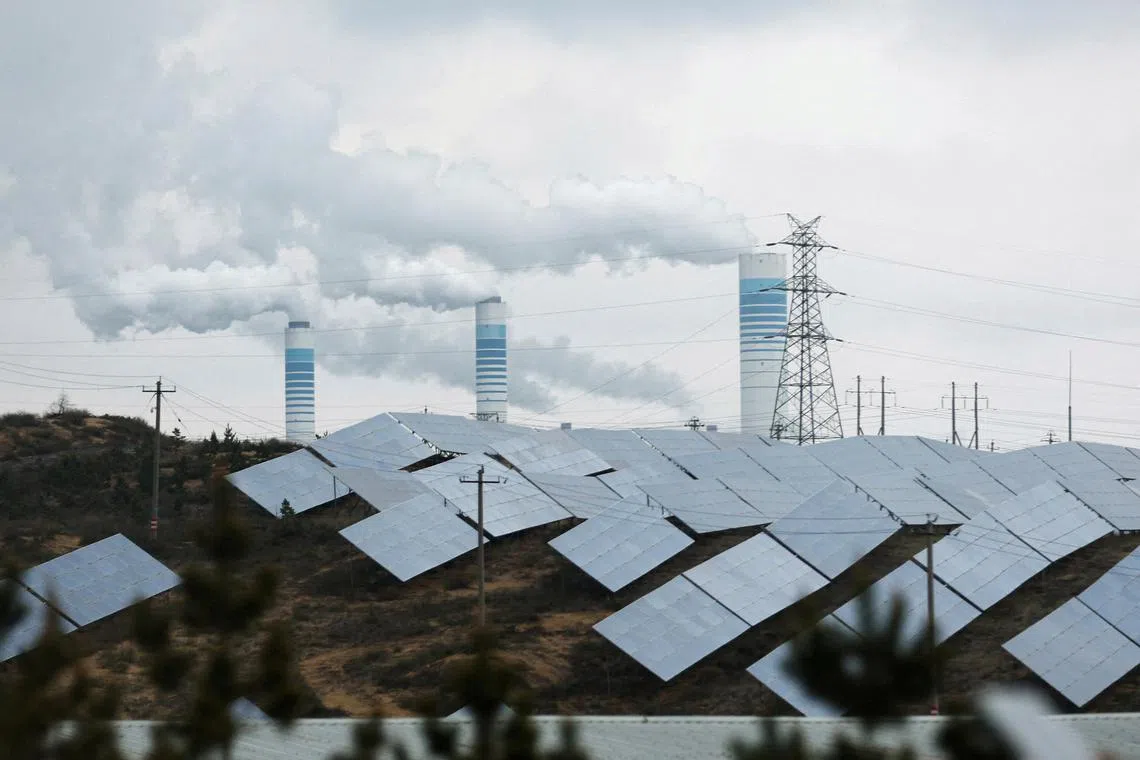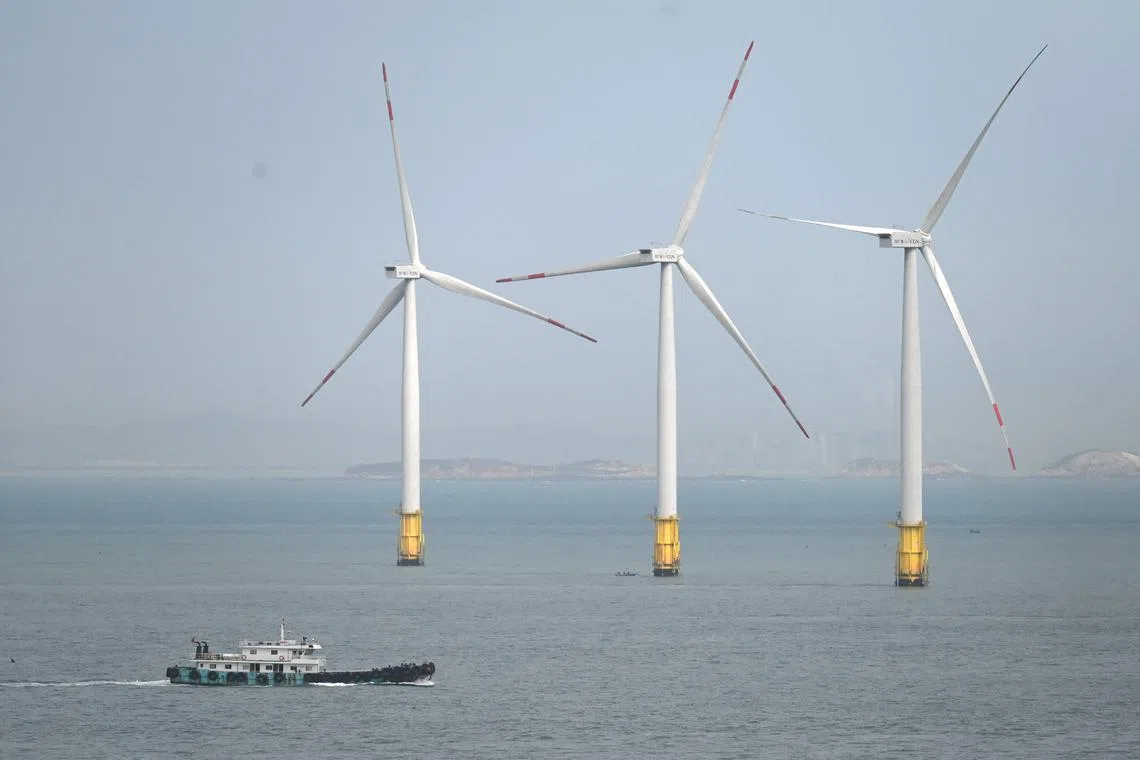China’s Q1 emissions reach record high as green energy growth ramps up
Sign up now: Get insights on Asia's fast-moving developments

China is by far the world’s largest consumer of coal, which is burned in power plants and steel mills.
PHOTO: REUTERS
Follow topic:
SINGAPORE - A resurgent economy pushed China’s carbon dioxide (CO2) emissions to a record high for the first three months of the year and this is on track to reach an all-time high for the whole of 2023, an analysis published on Friday shows.
Emissions grew 4 per cent in the first quarter of 2023 compared with a year earlier, said the analysis by the Centre for Research on Energy and Clean Air (Crea).
The end of China’s zero-Covid policy
But rapid growth in renewable energy investment is changing the outlook. Increasing wind and solar power generation is expected to curb China’s huge appetite for fossil fuels, especially coal, meaning emissions from the world’s top CO2 polluter could peak this decade and start to decline, the analysis said.
China is by far the world’s largest consumer of coal,
The nation emits a third of the world’s greenhouse gases, the World Bank says.
But it is also the world’s largest investor in renewable energy
According to the analysis, which Crea produced for Carbon Brief, a science and policy of climate change news site, China is targeting 160 gigawatts (GW) of new wind and solar capacity for 2023, up from 125GW added in 2022.
Globally, new wind and solar capacity for 2022 totalled 267GW, according to the International Renewable Energy Agency.
“If the 160GW target is met, the additional capacity would generate enough to cover a 3 per cent increase in China’s electricity demand,” Crea analysts Lauri Myllyvirta and Qi Qin said in the report, which is based on official figures and commercial data.
Electricity demand growth in 2023, largely driven by industry, was likely to be even larger because of the economic rebound and government stimulus, meaning coal power output would also increase, the analysts said.
“For the rest of the year, the government’s focus on economic growth means that China’s emissions are likely to reach an all-time high in 2023, topping the previous peak in 2021,” they added.
In 2021, China’s CO2 emissions rose to nearly 12 billion tonnes, accounting for 33 per cent of the global total for that year, the International Energy Agency said. China’s emissions were relatively flat in 2022, declining by 0.2 per cent, it added.
The analysts said that beyond 2023, “a continued rapid expansion of low-carbon energy could enable emissions to peak and enter into a structural decline, once the post-Covid-19 recovery has played out”.
President Xi Jinping has pledged that China would reduce coal consumption during its next five-year plan period from 2026 to 2030.
But the analysis highlights several trends which put that pledge at risk, at least in the short term.
China remains heavily reliant on coal for power, despite huge spending programmes to expand hydropower, nuclear energy, and wind and solar.

China is also the world’s largest investor in renewable energy and the government is accelerating spending on wind and solar.
PHOTO: AFP
An ongoing drought has cut hydropower output, meaning more coal power is being used to plug the gap.
Resurgent demand for air travel has led to a spike in oil consumption during the first quarter, while a jump in production of steel and cement, which are energy intensive to make, has also pushed emissions higher.
China has also accelerated approvals for new coal-fired power plants,
Local governments issued approval permits for approximately 100GW of new coal power capacity in 2022 – equivalent to 100 large coal-fired power plants. And a further 10GW of coal power projects were approved in the first quarter of 2023, the analysis noted.
Yet, while this was concerning, the authors said it was conceivable that this might not lead to a surge in CO2 emissions.
“The combination of rapid expansion of low-carbon energy supplies and expected slower electricity demand growth means China’s annual coal power output could soon start to decline,” they noted.
That could mean coal power plants operating for less time, cutting emissions but also affecting profitability. And high-profile criticisms in Chinese media of coal plant expansion could indicate that new coal projects would face more scrutiny, the analysts added.


